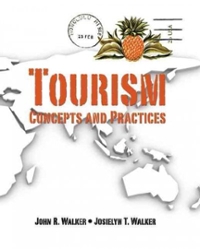Answered step by step
Verified Expert Solution
Question
1 Approved Answer
Juukan Gorge: how could they not have known? (And how can we be sure they will in future? (Source: The Conversation, 2020) How could they
Juukan Gorge: how could they not have known? (And how can we be sure they will in future? (Source: The Conversation, 2020) How could they not have known? That was the question on everyone's lips after leaders of the Australian defence force claimed not to have known about the atrocities committed by special forces in Afghanistan. It is now being asked about the leadership of Rio Tinto after that company ignored the wishes of the Puutu Kunti Kurrama and Pinikura (PKKP) peoples and destroyed caves containing priceless Aboriginal heritage dating back 46,000 years. Three of Rio's most senior executives, including the chief executive, apparently knew nothing about what was happening until it was too late. This was: despite a detailed archaeological report about the heritage value of the caves which the company had commissioned; despite representations of traditional landowners about the significance of the caves, and that they be preserved; despite the concerns of Rio's own cultural heritage staff in Western Australia. How could they not have known? The parliament's joint standing committee inquiry into the destruction of the Juukan Gorge caves is a golden opportunity to get an answer. Unfortunately, this month's interim report only touches on this question. The closest it comes is an observation that Rio had, 'a structure which sidelined heritage protection within the organisation, lack of senior management oversight, and no clear channel of communication to enable the escalation of heritage concerns to executives based in London'. Coalition committee member Dean Smith, Senator for Western Australia, went further 'it is my view that ... board members ... enabled a culture to develop at Rio Tinto where non-executive level management did not feel empowered to inform the executive of the significance of the rock shelters'. The problem is that bad news about what is happening at lower levels of large organisations travels up slowly, if at all. Matters get "stuck", and are not addressed. Bad news doesn't travel up. Paedophile priests, money laundering by banks, fraudulent misrepresentation by auto companies, corruption in police departments, unacceptable safety risks taken by mining companies - in each case when these sort of issues come to light, those at the top say they knew nothing about it. There are reasons for this failure to know: the people at the top would rather not hear about it, and so those below avoid telling them; whistleblowers get ostracised; people '"in the know" remain silent out of self-interest or misplaced loyalty; bonuses encourage a focus on profit at the expense of all else. So what should leaders do to change things? The first thing is to acknowledge that there is likely to be bad news - problems, challenges and things that are not right. Indeed, if they are not hearing bad news, something is wrong. Chief executives and board members need to develop a sense of "chronic unease" about whether they are really getting the full story from their subordinates or whether there are hidden time bombs ticking away that will eventually explode. They need to personally seek out and reward the bearers of bad news. Bad news needs to be sought out. Second, they need to structure their organisation to maximise the chance of bad news reaching the top. What is required in large commercial organisations like Rio Tinto is someone on the executive committee whose job is ensuring non-commercial environmental, social and governance risks are managed. That executive should neither be responsible for, nor rewarded for, any aspect of commercial performance and should be given a direct line to board members. Specialist staff reporting to that executive need to be embedded at lower levels of the organisation and in each of the company's divisions. The interim report concludes that Rio Tinto's board review has not fully grappled with these issues. Yet Rio Tinto has made some positive changes following the catastrophe. First, it has acknowledged that its cultural heritage staff in Western Australia have had no reporting line to higher-level social performance staff. Indeed, there have been no higher-level staff exclusively responsible for impacts to communities. Rio is making an (uneven) start. The company is creating a "social performance" function, reporting to a group executive on the corporate executive committee. Second (and of concern) Rio Tinto has specified that this executive will also be the culmination point for reports on new mining "projects". Projects are commercially and engineering oriented and might come to be seen as more important to the company and requiring greater focus from the group executive than health, safety, environment and social concerns. Third, social performance staff will be "embedded" within local mine management and product groups. The critical question is whether reports from these social performance specialists will get diluted by the time they reach the top. Question 1 Identify the key leadership issues in the case. How do these issues relate to questions of power and leadership and the concept of authentic leadership? 15 marks Question 2 Identify which of Simons' 'Levers of Control' are relevant to the case and based on the evidence presented in the case which 'Levers of Control' should Rio Tinto focus on to get the organisation back on track
Step by Step Solution
There are 3 Steps involved in it
Step: 1

Get Instant Access to Expert-Tailored Solutions
See step-by-step solutions with expert insights and AI powered tools for academic success
Step: 2

Step: 3

Ace Your Homework with AI
Get the answers you need in no time with our AI-driven, step-by-step assistance
Get Started


